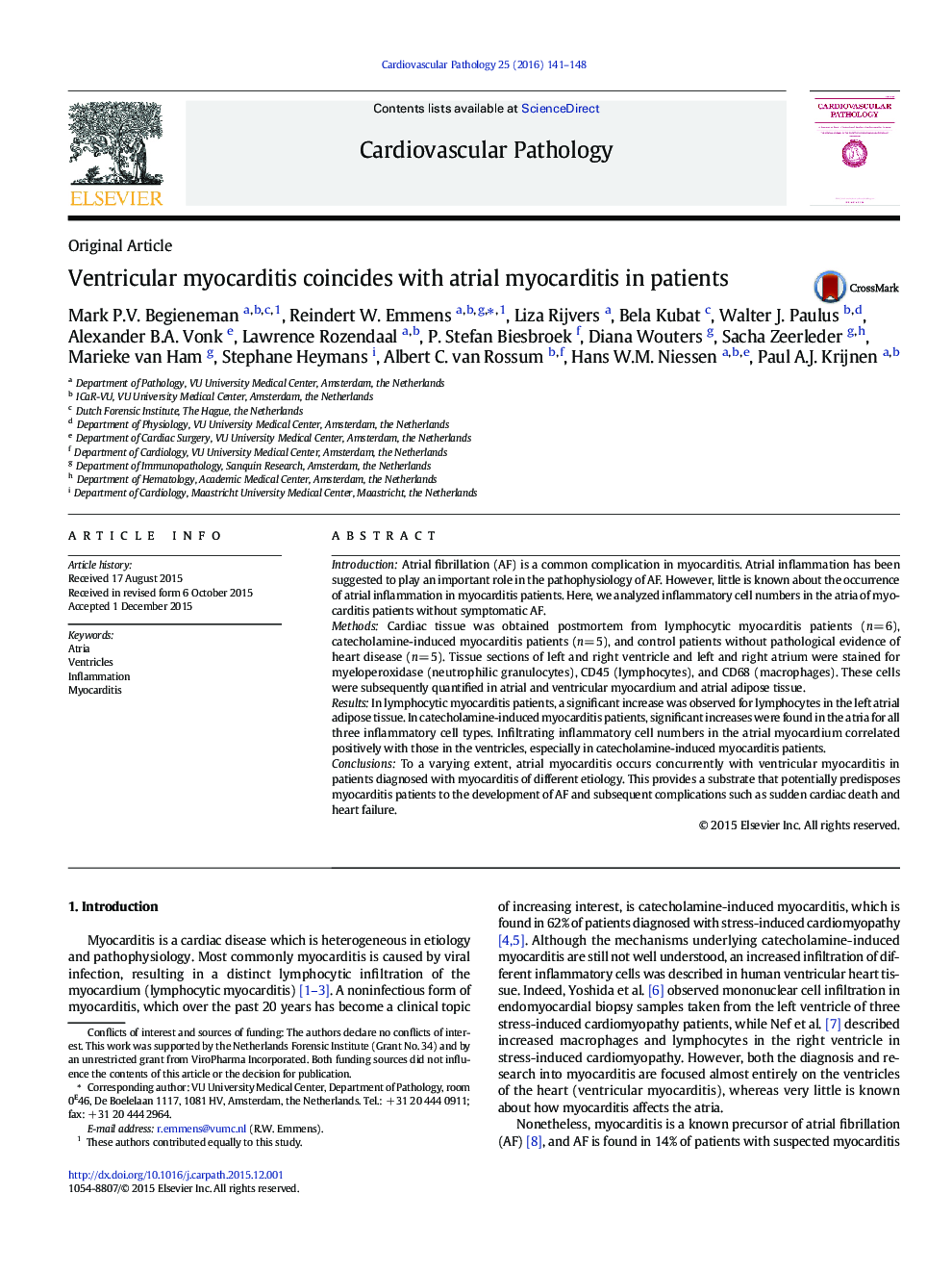| Article ID | Journal | Published Year | Pages | File Type |
|---|---|---|---|---|
| 5951886 | Cardiovascular Pathology | 2016 | 8 Pages |
IntroductionAtrial fibrillation (AF) is a common complication in myocarditis. Atrial inflammation has been suggested to play an important role in the pathophysiology of AF. However, little is known about the occurrence of atrial inflammation in myocarditis patients. Here, we analyzed inflammatory cell numbers in the atria of myocarditis patients without symptomatic AF.MethodsCardiac tissue was obtained postmortem from lymphocytic myocarditis patients (n=Â 6), catecholamine-induced myocarditis patients (n=Â 5), and control patients without pathological evidence of heart disease (n=Â 5). Tissue sections of left and right ventricle and left and right atrium were stained for myeloperoxidase (neutrophilic granulocytes), CD45 (lymphocytes), and CD68 (macrophages). These cells were subsequently quantified in atrial and ventricular myocardium and atrial adipose tissue.ResultsIn lymphocytic myocarditis patients, a significant increase was observed for lymphocytes in the left atrial adipose tissue. In catecholamine-induced myocarditis patients, significant increases were found in the atria for all three inflammatory cell types. Infiltrating inflammatory cell numbers in the atrial myocardium correlated positively with those in the ventricles, especially in catecholamine-induced myocarditis patients.ConclusionsTo a varying extent, atrial myocarditis occurs concurrently with ventricular myocarditis in patients diagnosed with myocarditis of different etiology. This provides a substrate that potentially predisposes myocarditis patients to the development of AF and subsequent complications such as sudden cardiac death and heart failure.
